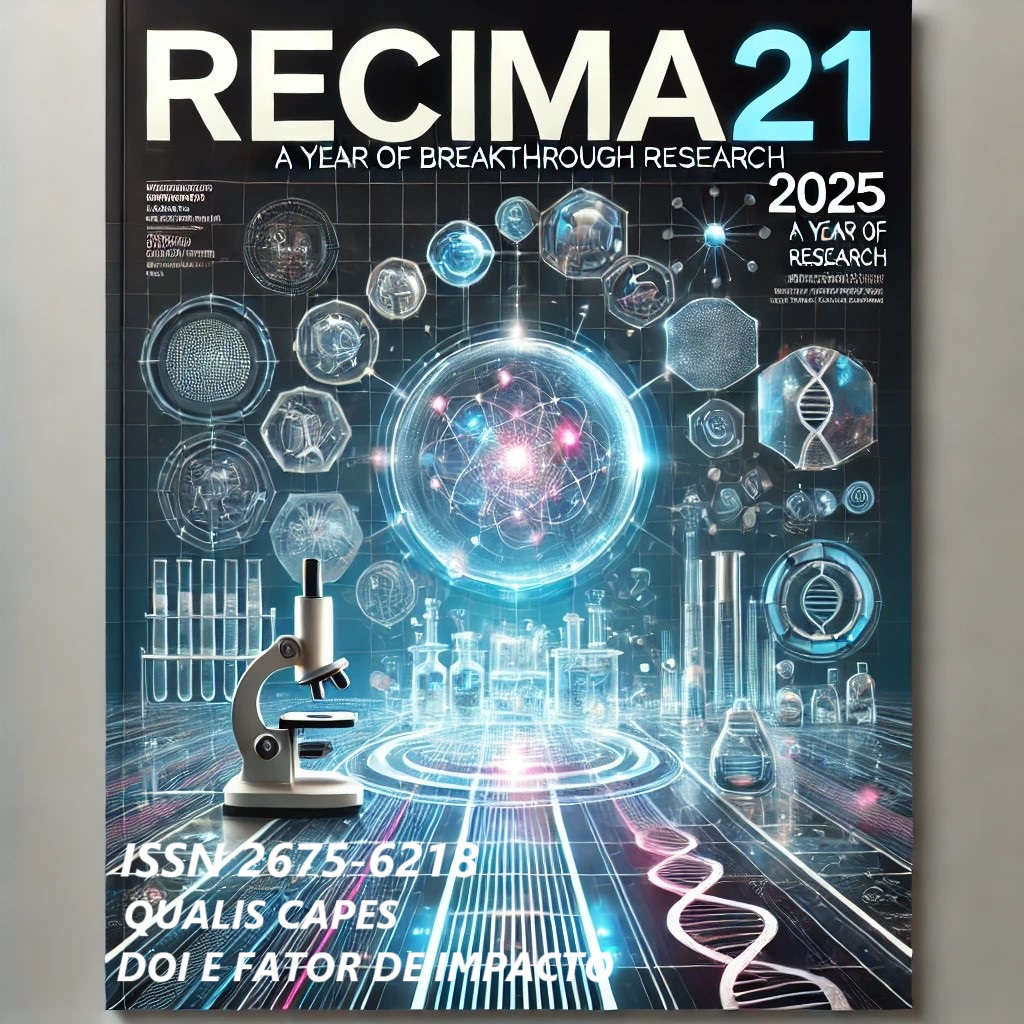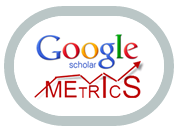CONSTRUCTION OF A CONVOLUTIONAL NEURAL NETWORK MODEL FOR DETECTION OF PULMONARY DISEASES IN X-RAY IMAGES
DOI:
https://doi.org/10.47820/recima21.v6i10.6849Keywords:
Deep Learning, Pulmonary Diseases, Convolutional Neural Networks.Abstract
In 2019, lower respiratory infections affected approximately 489 million people worldwide, with pneumonia accounting for around 4 million annual deaths, representing 7% of all fatalities. This disease is one of the leading causes of global mortality, with the greatest impact in developing countries, particularly among children under five and elderly individuals over seventy years old. The diagnosis of pulmonary diseases frequently relies on chest X-rays, which reveal severity through pulmonary opacities and pleural fluid accumulation. This study developed a model based on Convolutional Neural Networks (CNN) to automatically detect pulmonary pathologies in X-ray images. The model achieved an accuracy above 80%, with the confusion matrix indicating 91.8% precision for normal cases and 69.5% for pathological cases. The solution was integrated into a web application for the classification of radiographic images.
Downloads
References
CHICCO, D.; JURMAN, G. The advantages of the Matthews correlation coefficient (MCC) over F1 score and accuracy in binary classification evaluation. BMC Genomics, v. 21, n. 1, p. 6, 2020. DOI: https://doi.org/10.1186/s12864-019-6413-7
DETTMERS, T. Deep learning in a nutshell: Core concepts. NVIDIA Developer Blog, 2015. Disponível em: https://devblogs.nvidia.com/deep-learning-nutshell-core-concepts. Acesso em: 2 maio 2019.
DOSOVITSKIY, A. et al. An Image is Worth 16x16 Words: Transformers for Image Recognition at Scale. ICLR, 2021.
FATI, S. M.; SENAN, E. M.; ELHAKIM, N. Deep and hybrid learning technique for early detection of tuberculosis based on X-ray images using feature fusion. Applied Sciences, v. 12, n. 14, p. 7092, 2022. DOI: https://doi.org/10.3390/app12147092
FAWCETT, T. An introduction to ROC analysis. Pattern Recognition Letters, v. 27, n. 8, p. 861–874, 2006. DOI: https://doi.org/10.1016/j.patrec.2005.10.010
GOODFELLOW, I.; BENGIO, Y.; COURVILLE, A. Deep learning. [S. l.]: MIT Press, 2017.
HAYKIN, S. Neural networks: A comprehensive foundation. 2nd ed. [S. l.]: Prentice Hall, 2000.
JAHAN, N.; ANOWER, M. S.; HASSAN, R. Automated diagnosis of pneumonia from classification of chest x-ray im ages using efficientnet. In: 2021 International Conference on Information and Communication Technology for Sustainable Development (ICICT4SD). February 2021. p. 235-239. DOI: https://doi.org/10.1109/ICICT4SD50815.2021.9397055
JAIN, S.; SELF, W. H.; WUNDERINK, R. G.; FAKHRAN, S.; BALK, R.; BRAMLEY, A. M.; GRIJALVA, C. G. Community-acquired pneumonia requiring hospitalization among U.S. adults. New England Journal of Medicine, v. 373, n. 5, p. 415-427, 2015. doi: 10.1056/NEJMoa1500245. DOI: https://doi.org/10.1056/NEJMoa1500245
KHAN, M. A.; KADRY, S.; ZHANG, Y. D.; AKRAM, T.; SHARIF, M.; REHMAN, A.; SABA, T. Prediction of COVID-19-pneumonia based on selected deep features and one class kernel extreme learning machine. Computers & Electrical Engineering, v. 90, p. 106960, 2021. DOI: https://doi.org/10.1016/j.compeleceng.2020.106960
KOMIYA, K.; ISHII, H.; KADOTA, J. Healthcare-associated pneumonia and aspiration pneumonia. Respiration, v. 92, n. 5, p. 307-317, 2016. doi: 10.1159/000449102 DOI: https://doi.org/10.1159/000449102
KONG, L.; CHENG, J. Based on improved deep convolutional neural network model pneumonia image classification. PloS one, v. 16, n. 11, e0258804, 2021. DOI: https://doi.org/10.1371/journal.pone.0258804
KRIZHEVSKY, A.; SUTSKEVER, I.; HINTON, G. E. ImageNet classification with deep convolutional neural networks. Advances in Neural Information Processing Systems, p. 1-9, 2012.
LEE, S.; CHO, H.R.; YOO, J. S.; KIM, Y.U. The prognostic value of median nerve thickness in diagnosing carpal tunnel syndrome using magnetic resonance imaging: a pilot study. Korean Journal of Pain, v. 33, p. 54–59, 2020. doi: 10.3344/kjp.2020.33.1.54. DOI: https://doi.org/10.3344/kjp.2020.33.1.54
LIANG, G.; ZHENG, L. A transfer learning method with deep residual network for pediatric pneumonia diagnosis. Computer methods and programs in biomedicine, v. 187, 104964, 2020. DOI: https://doi.org/10.1016/j.cmpb.2019.06.023
LUNDERVOLD, A. S.; LUNDERVOLD, A. An overview of deep learning in medical imaging focusing on MRI. Zeitschrift für Medizinische Physik, v. 29, n. 2, p. 102–127, 2019. DOI: https://doi.org/10.1016/j.zemedi.2018.11.002
LUSTED, L. B. Signal detectability and medical decision-making. Science, v. 171, p. 1217–1219, 1971. doi: 10.1126/science.171.3977.1217. DOI: https://doi.org/10.1126/science.171.3977.1217
MEHRYAR MOHRI, A.; TALWALKAR, A. Foundations of machine learning. [S. l.: s. n.], 2012.
MENDES, D. et al. Deep learning book. [S. l.: s. n.], 2023. Disponível em: http://deeplearningbook.com.br/o-que-sao-redes-neurais-artificiais-profundas/
METERSKY, M. L.; MASTERTON, R. G.; LODE, H.; FILE, T. M. Hospital-acquired pneumonia in adults: diagnosis, assessment of severity, initial antimicrobial therapy, and preventative strategies. A consensus document. American Journal of Respiratory and Critical Care Medicine, v. 196, n. 10, p. 1336-1344, 2017. doi: 10.1164/rccm.201710-2080ST.
METZ, C. E. Basic principles of ROC analysis. In: Seminars in nuclear medicine, v. 8, n. 4, p. 283-298, October 1978. DOI: https://doi.org/10.1016/S0001-2998(78)80014-2
NAHM, F. S. Receiver Operating Characteristic Curve: Overview and Practical Use for Clinicians. Korean Journal of Anesthesiology, v. 75, p. 25–36, 2022. Disponível em: https://doi.org/10.4097/kja.21209. Acesso em: 16 out. 2025. DOI: https://doi.org/10.4097/kja.21209
NAZ, J.; KHAN, M. A.; ALHAISONI, M.; TARIQ, U.; KADRY, S. Segmentation and Classification of Stomach Abnormalities Using Deep Learning. Computers, Materials & Continua, v. 69, n. 1, 2021. DOI: https://doi.org/10.32604/cmc.2021.017101
RAHMAN, T.; KHANDAKAR, A.; KADIR, M. A.; ISLAM, K. R.; ISLAM, K. F.; MAZHAR, R.; CHOWDHURY, M. E. Reliable tuberculosis detection using chest X-ray with deep learning, segmentation and visualization. Ieee Access, v. 8, p. 191586-191601, 2020. DOI: https://doi.org/10.1109/ACCESS.2020.3031384
RAJPURKAR, P. et al. CheXNet: Radiologist-Level Pneumonia Detection on Chest X-Rays with Deep Learning. arXiv preprint, arXiv:1711.05225, 2017.
RASCHKA, S.; MIRJALILI, V. Python machine learning: Machine learning and deep learning with Python, scikit-learn, and Tensor Flow. 2nd ed. [S. l.]: Packt Publishing Ltd, 2017.
RUMELHART, D. E.; HINTON, G. E.; WILLIAMS, R. J. Learning internal representations by error propagation. [S. l.: s. n.], 1985. DOI: https://doi.org/10.21236/ADA164453
SANTANA, M. Deep learning: Do conceito às aplicações. Data Hackers, 2019. Disponível em: https://medium.com/datahackers/deeplearningdoconceito%c3%a0saplica%c3%a7%c3%b5es-e8e91a7c7eaf
SATHITRATANACHEEWIN, S.; SUNANTA, P.; PONGPIRUL, K. Deep learning for automated classification of tuberculosis-related chest X-Ray: dataset distribution shift limits diagnostic performance generalizability. Heliyon, v. 6, n. 8, 2020. DOI: https://doi.org/10.1016/j.heliyon.2020.e04614
SHARMA, S.; GUPTA, S.; GUPTA, D.; RASHID, J.; JUNEJA, S.; KIM, J.; ELARABAWY, M. M. Performance evaluation of the deep learning based convolutional neural network approach for the recognition of chest X-ray images. Frontiers in oncology, v. 12, p. 932496, 2022. DOI: https://doi.org/10.3389/fonc.2022.932496
SPÖRL, C.; CASTRO, E.; LUCHIARI, A. Aplicação de redes neurais artificiais na construção de modelos de fragilidade ambiental. Revista do Departamento de Geografia, v. 21, p. 113-135, 2011. DOI: https://doi.org/10.7154/RDG.2011.0021.0006
SWAPNAREKHA, H.; BEHERA, H. S.; ROY, D.; DAS, S.; NAYAK, J. Competitive deep learning methods for COVID-19 detection using X-ray images. Journal of The Institution of Engineers (India): Series B, v. 102, n. 6, p. 1177-1190, 2021. DOI: https://doi.org/10.1007/s40031-021-00589-3
TAN M.; LE, Q. EfficientNet: Rethinking Model Scaling for Convolutional Neural Networks. ICML, 2019.
TANNER JR, W. P.; SWETS, J. A. A decision-making theory of visual detection. Psychological Review, v. 61, p. 401–409, 1954. doi: 10.1037/h0058700. DOI: https://doi.org/10.1037/h0058700
TRIPATHI, A.; SINGH, T.; NAIR, R. R. Optimal pneumonia detection using convolutional neural networks from x-ray images. In: 2021 12th International Conference on Computing Communication and Networking Technologies (ICCCNT). July 2021. p. 1-6. DOI: https://doi.org/10.1109/ICCCNT51525.2021.9580140
VOS, Theo et al. Global burden of 369 diseases and injuries in 204 countries and territories, 1990-2019: a systematic analysis for the Global Burden of Disease Study 2019. The Lancet, v. 396, n. 10258, p. 1204-1222, 2020. doi: 10.1016/S0140-6736(20)30925-9 DOI: https://doi.org/10.1016/S0140-6736(20)30925-9
WERBOS, P. Beyond regression: New tools for prediction and analysis in the behavioral sciences. Thesis (PhD) - Committee on Applied Mathematics, Harvard University, Cambridge, MA, 1974.
Downloads
Published
License
Copyright (c) 2025 RECIMA21 - Revista Científica Multidisciplinar - ISSN 2675-6218

This work is licensed under a Creative Commons Attribution 4.0 International License.
Os direitos autorais dos artigos/resenhas/TCCs publicados pertecem à revista RECIMA21, e seguem o padrão Creative Commons (CC BY 4.0), permitindo a cópia ou reprodução, desde que cite a fonte e respeite os direitos dos autores e contenham menção aos mesmos nos créditos. Toda e qualquer obra publicada na revista, seu conteúdo é de responsabilidade dos autores, cabendo a RECIMA21 apenas ser o veículo de divulgação, seguindo os padrões nacionais e internacionais de publicação.













